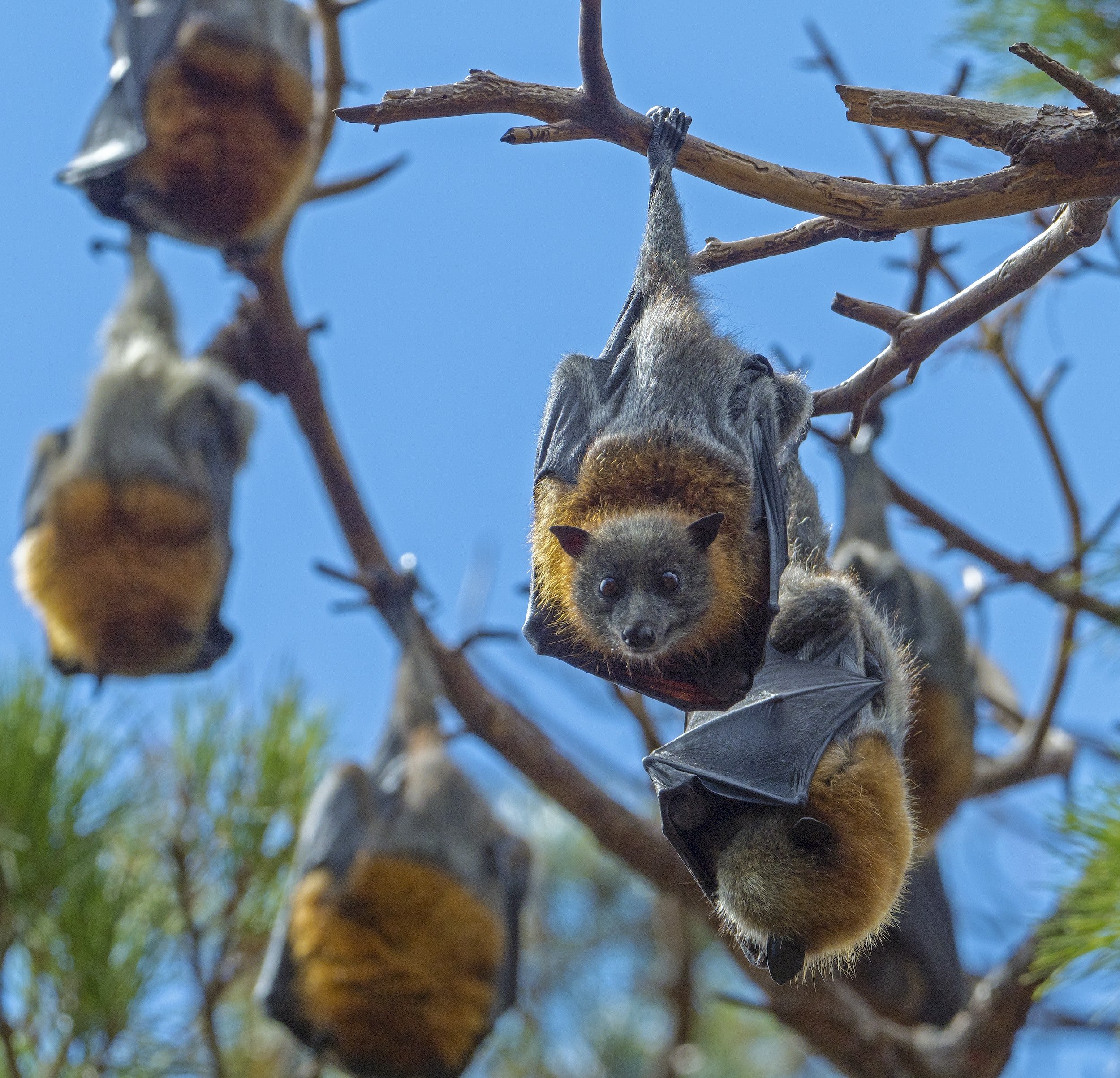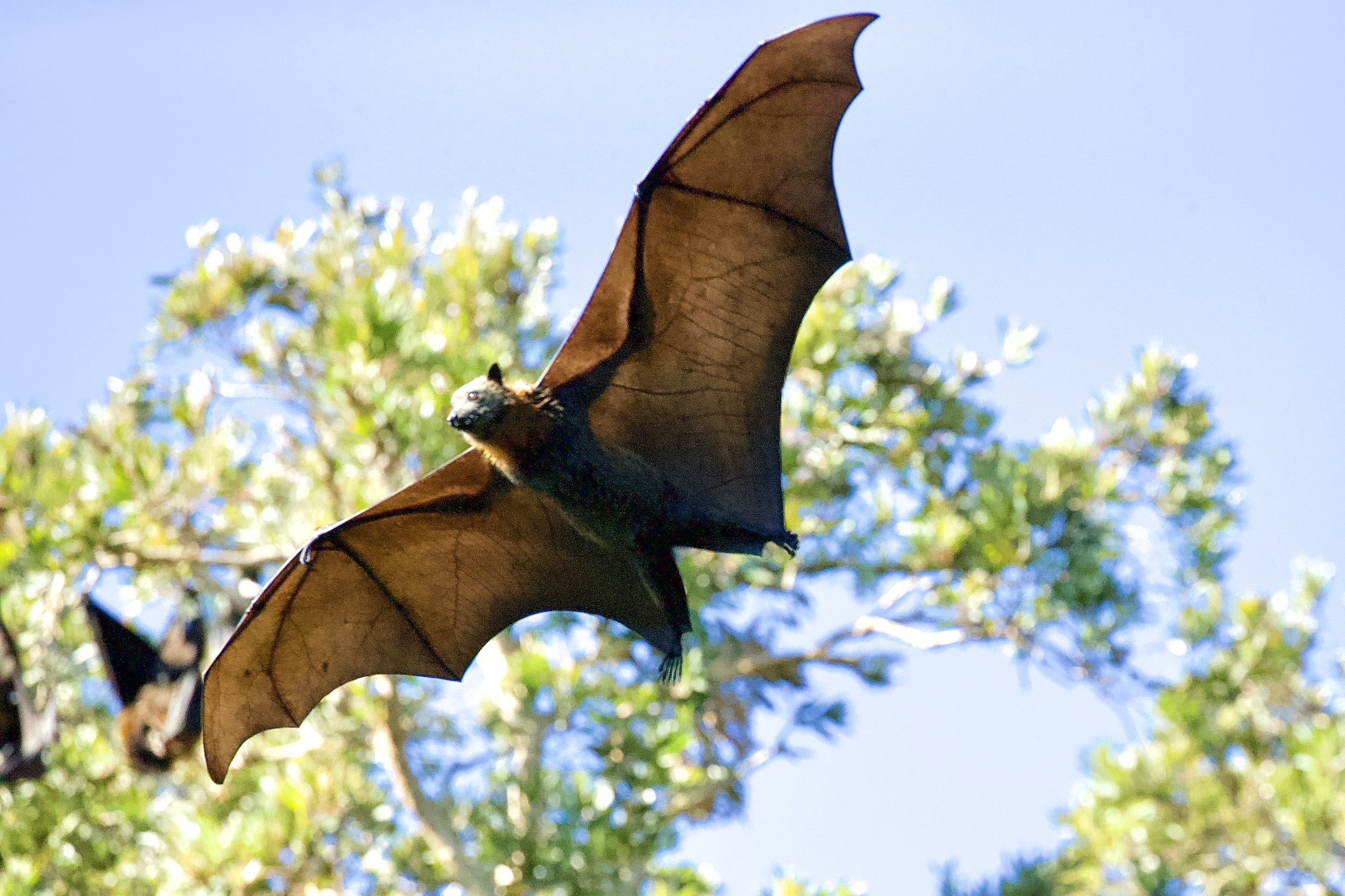30 Facts about Bats
When the sun sets and darkness creeps in, a whole new world of creatures takes flight, led by the fascinating and mysterious bats. These nocturnal wonders have captivated our imaginations for centuries, inspiring myths and legends along the way. Yet, there's so much more to bats than meets the eye! Dive into this fun, energetic, and optimistic article to discover the extraordinary world of bats and why they should inspire hope and admiration.
Meet the Bat Family!
Bats belong to the order Chiroptera, which is divided into two suborders: Megachiroptera (large fruit bats) and Microchiroptera (small insect-eating bats). Let's get to know some of these amazing creatures:
The largest bat: The Malayan flying fox (Pteropus vampyrus) boasts an impressive wingspan of up to 6 feet (1.8 meters) and mainly feasts on fruit.
The smallest bat: The bumblebee bat (Craseonycteris thonglongyai), measuring just over 1 inch (3 centimeters) long and weighing a mere 2 grams, is the tiniest of them all.
The fastest bat: The Brazilian free-tailed bat (Tadarida brasiliensis) can reach speeds of up to 100 miles per hour (160 kilometers per hour), making it the fastest mammal on Earth!
Bat Superpowers
Bats possess a plethora of awe-inspiring abilities, from navigating the night skies to catching prey with incredible precision. Here are some of their superpowers:
Echolocation: Many bats use echolocation to navigate and hunt. By emitting high-pitched sounds and listening to the echoes, they can locate objects and prey with remarkable accuracy.
Flight: Bats have elongated fingers connected by a thin membrane called the patagium, which forms their wings. This unique structure enables them to fly with great agility and maneuverability.
Longevity: Despite their small size, bats have surprisingly long lifespans. Some species can live for over 30 years, making them one of the longest-lived mammals for their size.
Bats: Nature's Pest Controllers
Insectivorous bats are natural pest controllers, consuming vast quantities of insects each night. Here are some fascinating facts about their appetite and their impact on agriculture:
A single little brown bat (Myotis lucifugus) can consume up to 1,000 mosquito-sized insects per hour.
Bats save US farmers an estimated $23 billion annually in pest control costs by reducing the need for chemical pesticides.
By controlling insect populations, bats contribute to maintaining the balance of ecosystems and supporting biodiversity.
Bats and Pollination
Bats play a critical role in pollination and seed dispersal, helping to maintain the world's plant diversity. Some noteworthy examples include:
The lesser long-nosed bat (Leptonycteris yerbabuenae) pollinates agave plants, which are used to produce tequila.
The Malayan flying fox (Pteropus vampyrus) is a vital pollinator for durian fruit, a Southeast Asian delicacy.
Bats disperse seeds from fruits they consume, promoting forest regeneration and supporting countless plant and animal species.
Bat Conservation and Why It Matters
Unfortunately, bats face numerous threats, including habitat loss, disease, and human persecution. Protecting these incredible creatures is crucial, not only for the bats themselves but for the ecosystems they help support. Here's why bat conservation matters and what you can do to help:
Biodiversity: As pollinators, seed dispersers, and natural pest controllers, bats play an essential role in maintaining the health and diversity of ecosystems around the world.
Economic impact: By reducing the need for chemical pesticides, bats save billions of dollars in pest control costs and help ensure the production of essential crops, such as cocoa and agave.
Disease prevention: Bats' voracious appetite for insects, including mosquitoes, can help reduce the spread of diseases such as malaria and West Nile virus.
How You Can Help Bats
There are several ways you can contribute to bat conservation and promote a hopeful future for these winged wonders:
Install a bat house: By providing a safe and cozy roosting spot for bats, you can attract them to your backyard and enjoy their natural pest control services.
Plant a bat-friendly garden: Planting native flowers that bloom at night can attract insects for bats to feed on, while fruit trees and bushes can provide food for fruit-eating bats.
Support bat conservation organizations: Donate to or volunteer with organizations dedicated to protecting bats, such as Bat Conservation International or your local wildlife rehabilitation center.
Spread the word: Educate your friends, family, and community about the importance of bats and how they can help protect these fascinating creatures.
Busting Bat Myths
To wrap up our journey into the world of bats, let's debunk some common misconceptions about these extraordinary animals:
Myth: Bats are blind. Fact: While bats rely heavily on echolocation, they can also see quite well. In fact, some fruit bats have excellent night vision.
Myth: All bats carry rabies. Fact: Only a very small percentage of bats carry rabies, and transmission to humans is rare. Bats should not be handled, but they pose little risk when left undisturbed.
Myth: Bats are bloodthirsty vampires. Fact: Out of over 1,400 bat species, only three feed on blood (the vampire bats). Most bats eat insects or fruit. Vampire bats would rather chow down on a pig or cow than a human.
Bats and Human Culture
Throughout history, bats have held a significant place in human culture, appearing in myths, legends, and art. Exploring the various ways bats have inspired and influenced societies can provide a fascinating perspective on these captivating creatures:
Symbolism: In many cultures, bats are seen as symbols of good fortune, happiness, and prosperity. For example, in Chinese culture, the word for bat, "蝠" (fú), is a homophone for the word "福" (fú), which means good luck or happiness.
Art and literature: Bats have been depicted in numerous forms of art, from ancient cave paintings to modern comic books. They have also appeared in literature, such as in Bram Stoker's famous novel, "Dracula," which introduced the vampire bat as a symbol of horror.
Movies and television: The image of the bat has been used to create iconic characters like Batman, a popular superhero who uses bat-inspired gadgets and vehicles to fight crime. Bats have also appeared in various animated films and documentaries, highlighting their unique abilities and mysterious nature.
Exploring the cultural significance of bats can help foster a deeper understanding of and appreciation for these remarkable animals, as well as encourage conservation efforts to protect them for future generations to admire and cherish.
Thanks for reading!
Bats are captivating, extraordinary creatures with incredible abilities and essential roles in ecosystems around the world. As you've discovered, there's so much more to these winged wonders than the myths and legends that surround them. By appreciating their unique contributions and working to protect them, we can ensure a hopeful, vibrant future for bats and the ecosystems they support. So, the next time you see a bat flitting through the night sky, take a moment to marvel at its remarkable features and its vital place in our world.
















